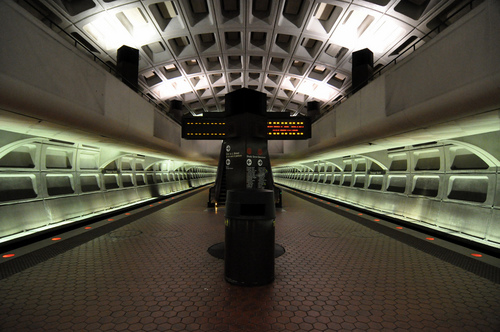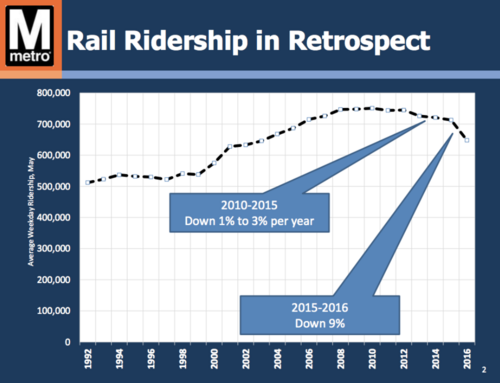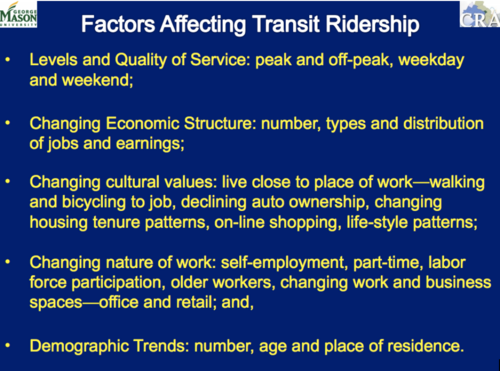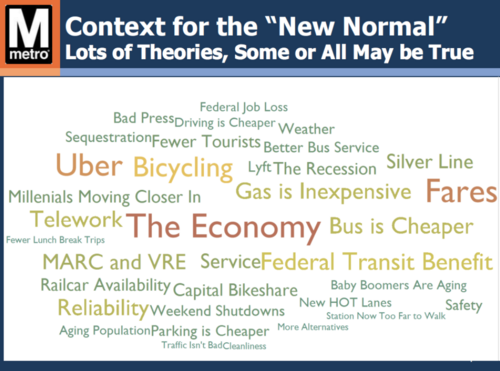Metro ridership is dropping. Here’s what some experts think is the cause.
Ridership on both Metrorail and Metrobus dropped off in a big way over the past year. Possible reasons include cheaper gas and a struggling economy, but those probably aren’t substitutes for two staples: safety and reliability issues.
According to WAMU’s Martin Di Caro, overall Metro ridership (both rail and bus) fell by to 321 million trips, or about six percent, during the 2015 fiscal year (WMATA’s fiscal year runs from July-June). Rail ridership declined even more steeply than the system as a whole, falling seven percent.
With bus ridership dropping too, it’s apparent that commuters displaced by SafeTrack did not turn to Metrobus as an alternative. These declines compound other factors that have affected ridership, says DiCaro:
Demographic changes, the rise of telework, the proliferation of transport alternatives such as Uber or Capital Bikeshare, the economic downturn and reductions in federal spending, constant weekend track work over the past five years — all have combined with consistently poor rush hour service to drain Metrorail ridership.
Experts disagree about the main factors affecting transit ridership
Last week, a George Mason professor who focuses on policy and transit, a top official at the American Public Transportation Association, and planners from within Metro briefed Metro’s board of directors, which is preparing for budget discussions, on the reasons for the decline.
Their explanations for the drop varied.
George Mason Professor of Public Policy and Regional Transit Stephen Fuller presented a handful of factors affecting Metro’s ridership. “Levels and quality of service” topped his list:
APTA Vice President of Policy Art Guzzetti listed lower gas prices and fare prices as the top two factors potentially affecting ridership:
Metro’s Managing Director of Planning Shyam Kannan laid out the agency’s analysis of ridership. Among the largest factors in Metro’s own theories about declining ridership are the economy and the rise of Uber and bicycling as alternate commuting methods. Those, however, are outside of WMATA’s control.
What WMATA can control are service levels and reliability. That is what WMATA believes will bring back ridership.
Quicker, more frequent, and more reliable service would encourage people to ride more often:
Is Metro ignoring the obvious?
As twitter user @BrianinDC points out, “safety” and “reliability” are not as could be more prominent in Metro’s analysis of its issues don’t feature prominently on one of Metro’s slides.
Interestingly, however, Metro did report that quicker, more frequent, and more reliable service would encourage people to ride more often.
Correction: The original version of this post overlooked a few of Metro’s slides. While Kannan did discuss a number of factors that explain lower ridership, his presentation centered on safety and reliability as the top drivers of ridership. The original also said that Metro ridership has dropped by 321 million trips, when in fact it has dropped to 321 million trips.






